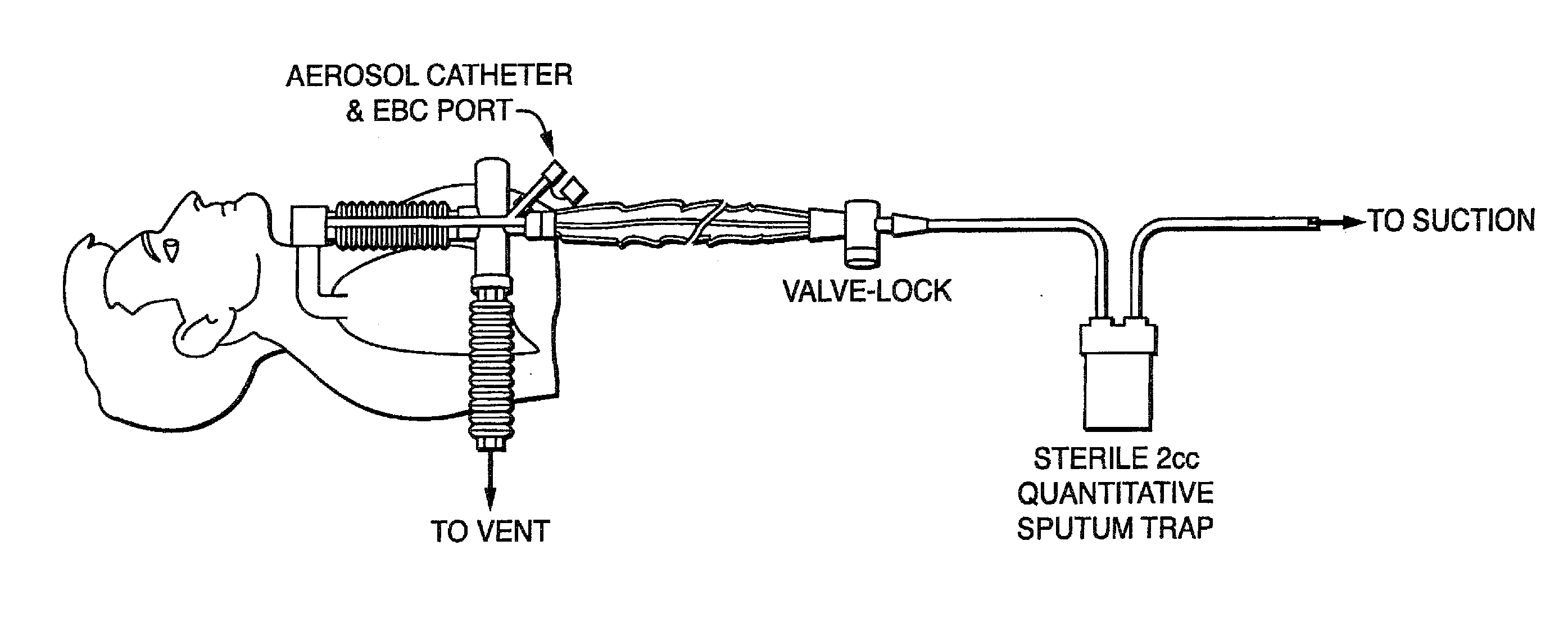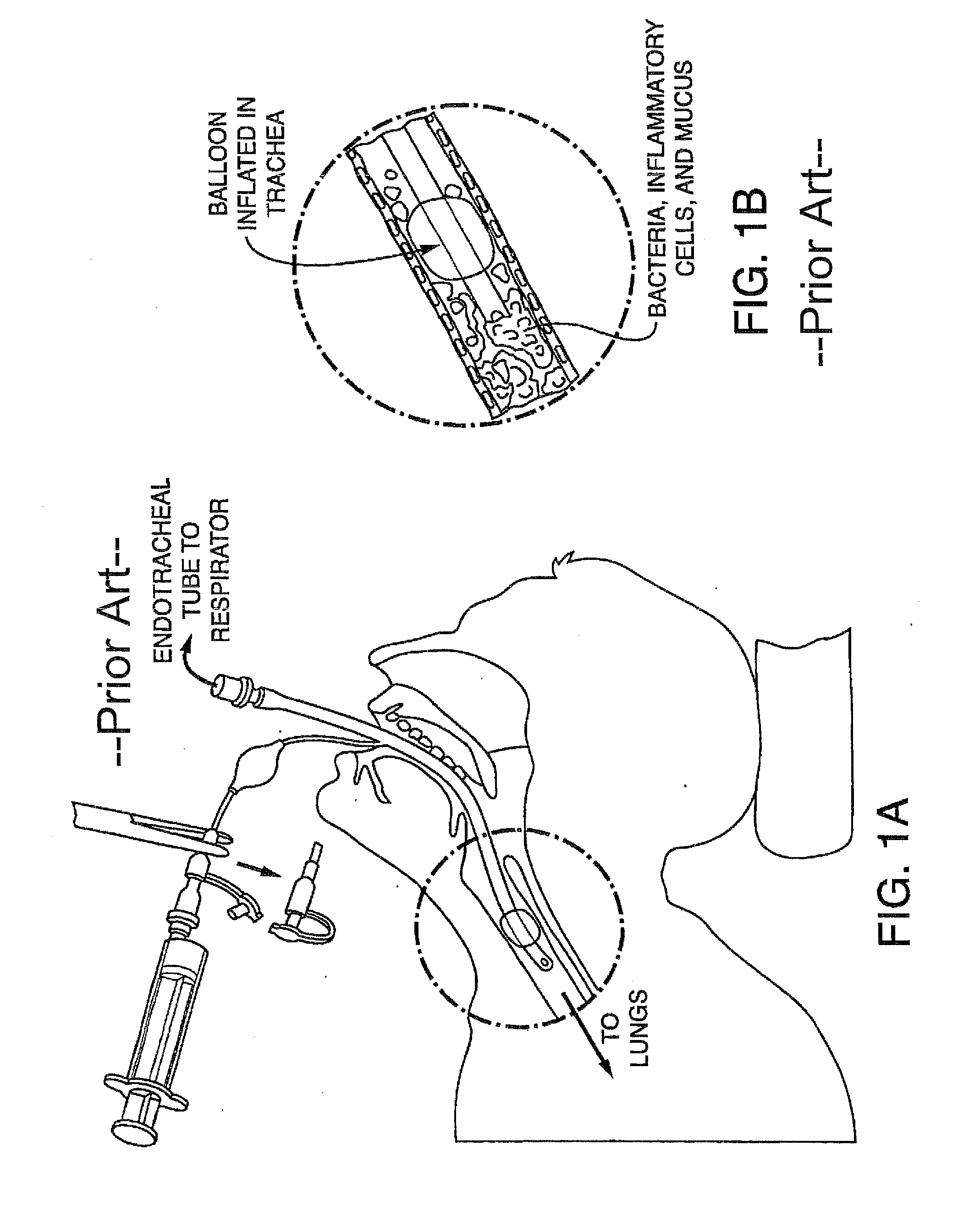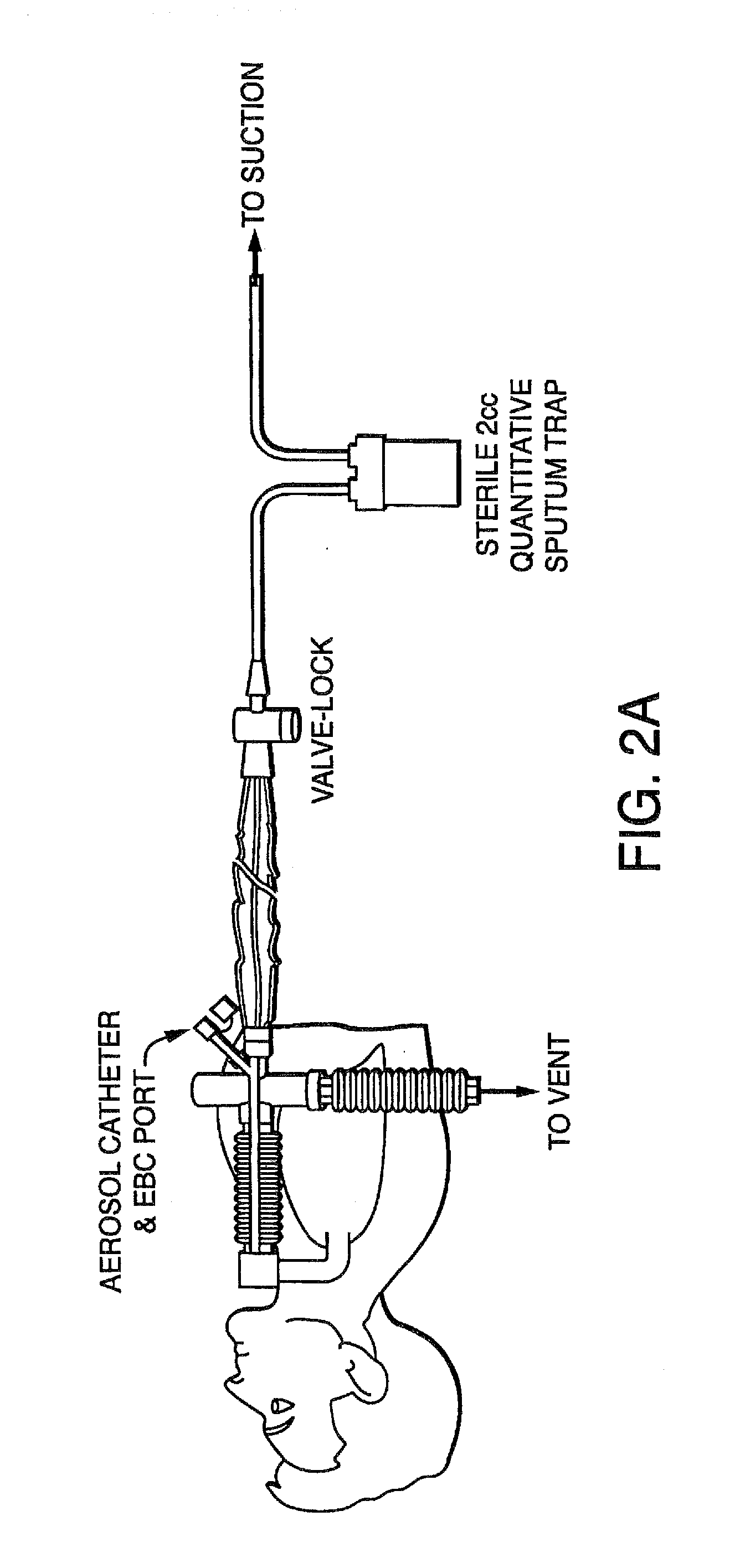Methods, devices and Formulations For Targeted Endobronchial Therapy
a technology of endobronchial therapy and bronchitis, which is applied in the direction of medical devices, respirators, other medical devices, etc., can solve the problems of insufficient therapeutic efficacy, insufficient resistance, and insufficient toxicity, so as to reduce the mortality rate of intubated patients, increase resistance, and reduce the incidence of resistan
- Summary
- Abstract
- Description
- Claims
- Application Information
AI Technical Summary
Benefits of technology
Problems solved by technology
Method used
Image
Examples
example 1
[0163]An aspect of the present invention may be regarded as a method for quantifying sputum volume in a ventilated patient. In one embodiment, the ventilated patient is suctioned until there are no further secretions. The ventilated patient is then suctioned for a predetermined time period. If there is a predetermined amount of sputum while the ventilated patient has been suctioned up to the predetermined time period, the sputum is cultured and analyzed. A therapy order is written based on the analyzed culture.
[0164]In accordance with other aspects of the invention, the ventilated patient is suctioned early in the morning (e.g, at 6:00 A.M.) until there are no further secretions. The ventilated patient is suctioned a second time later in the morning (e.g., at 8:00 A.M.) until there are no more secretions.
[0165]In accordance with still other aspects of the invention, the ventilated patient is suctioned hourly for four hours. In accordance with yet other aspects of the invention, the ...
example 2
[0172]Embodiments of the present invention provide a system and method for defining risk for and prevention of ventilator associated pneumonia. The method comprises means for quantifying sputum volume in mechanically ventilated patients and interpreting the value obtained by using a reference database in which pneumonia risk data and sputum volumes are correlated. Alternatively, or in combination with sputum volume measurements, the method comprises means for measuring the flux of inflammatory cells or mediators of the inflammatory process in the sputum over time. The system in one embodiment comprises a suction catheter adapted for practice of the method and for administering the treatment via an aerosolization catheter. In exemplary embodiments, the system also enables measurements of volatile or aerosolized components of exhaled breath condensate (EBC) that are reflective of developing bacterial infection. Exemplary embodiments of the present invention provide a means for determi...
example 3
[0177]Experiments have shown a marked increase in secretions in those patients who had pneumonia compared to those patients without pneumonia. The amount of secretions increased during the second week in those patients without pneumonia. More specifically, the sputum volume for patients with pneumonia increased from approximately 6 ccs in the first week of ventilation to approximately 8 ccs in the second week. For patients not having pneumonia, the sputum volume increase from approximately 1 cc in the first week to approximately 2 ccs in the second week.
[0178]Data supporting the validity of sputum volume as a marker of inflammation was demonstrated in investigations examining the relationship between sputum volume and inflammatory cells and cytokines. Aerosolized antibiotics were administered to chronically ill stable patients requiring mechanical ventilation. Treatment caused a significant reduction in the volume of secretions (p=0.002). In addition there was a marked reduction in ...
PUM
 Login to View More
Login to View More Abstract
Description
Claims
Application Information
 Login to View More
Login to View More - R&D
- Intellectual Property
- Life Sciences
- Materials
- Tech Scout
- Unparalleled Data Quality
- Higher Quality Content
- 60% Fewer Hallucinations
Browse by: Latest US Patents, China's latest patents, Technical Efficacy Thesaurus, Application Domain, Technology Topic, Popular Technical Reports.
© 2025 PatSnap. All rights reserved.Legal|Privacy policy|Modern Slavery Act Transparency Statement|Sitemap|About US| Contact US: help@patsnap.com



